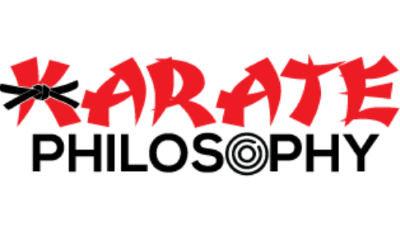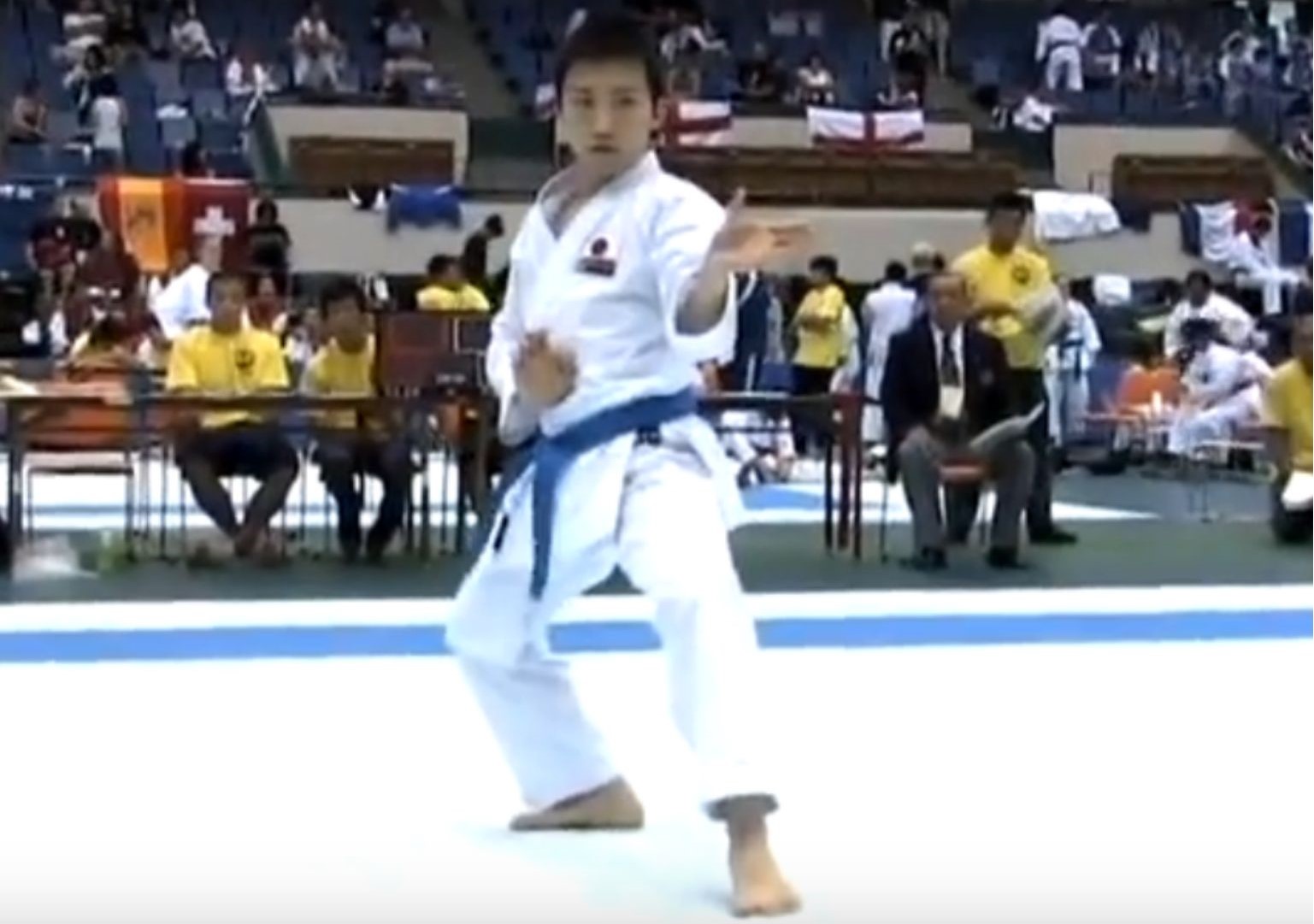Wado Ryu karate style has only 9 official katas according to its founder, Hironori Otsuka sensei, in his book Wado Ryu Karate: Hironori Otsuka.
The 9 official katas are Pinan Nidan, Pinan Shodan, Pinan Sandan, Pinan Yodan, Pinan Godan, Kūshankū, Naihanchi, Seishan and Chintō.
However, Hironori Otsuka sensei did teach other katas and most Wado Ryu schools today teach a total of 15 katas or 16 katas (if Suparinpei is still retained).
In addition, some dojos teach their beginner students Ten no kata and Taikyoku kata series which were created by Gichin Funakoshi sensei to introduce new students to basic techniques and kata embusen.
Below is a list of the basic katas plus 16 Wado Ryu karate katas and video demonstrations by karate masters, senseis, world champions, and senior students.
As Hironori Otsuka sensei studied under Gichin Funakoshi, the founder of the Shotokan style, Wado Ryu katas are mostly taken from Shotokan katas with minor variations.
Content
Beginner katas
Pinan series
Up to black belt katas
Advanced katas
1. Beginner katas taught at some Wado Ryu dojos
Ten no kata
Ten no kata was created by Gichin Funakoshi sensei to teach new students basic techniques with limited foot movements and hence giving stability.
Ten no kata is not a kata in its traditional sense, it is just a series of punching and blocking techniques in the most commonly used stances.
Ten means “sky,” “heaven,” or “universe. Thus, Ten no kata means “Kata of the Universe” or “Kata of the Heaven”.
Below are two beautiful demonstrations of Ten no kata by Yvonne Doyle sensei from Rainhill Kase Ha Shotokan Karate Academy and another unknown instructor from English Shotokan Academy.
Taikyoku Shodan
This is the first basic kata which includes only three recurring techniques: gedan barai (downward block), chudan oi-tzuki (middle lunge punch), and zenkutsu dachi (forward stance).
Taikyoku Shodan means “First Cause”.
Below is a demonstration of Taikyoku Shodan by Masao Kawasoe sensei with multiple versions: slow, speed and power, and side view.
Taikyoku Nidan
This is the second basic kata which is almost the same as Taikyoku Shodan except the lunge punch is jodan punch instead of chudan punch.
Taikyoku Nidan means “Second Cause”.
Below is a demonstration of Taikyoku Nidan by Cyril Guénet sensei.
Taikyoku Sandan
This is the third basic kata which comprises the following recurring techniques uchi uke (inside block), chudan and jodan oi-tzuki (middle and head punch), gedan barai (downward block), zenkutsu dachi (front stance), and kokutsu dachi (back stance).
Taikyoku Sandan means “Third Cause”.
Below is a demonstration of Taikyoku Sandan by Cyril Guénet sensei.
2. Pinan Series
Pinan series consists of five katas and is a foundation for many other katas. Its mastery helps karate students to defend themselves effectively in many situations.
Pinan katas were created by Master Ankō Itosu and are believed to have originated from Okinawa.
While Gichin Funakoshi sensei renamed the series Heian katas, Hironori Otsuka sensei changed the name back to Pinan when he created the Wado Ryu style.
Pinan means “peaceful mind”.
Pinan Nidan (平安二段)
This is the first official kata in Wado Ryu. It introduces the hammer fist and knife hand strike techniques.
Below are demonstrations of Pinan Nidan by Hironori Otsuka Sensei, the founder of the Wado Ryu style and Neil Pottinger sensei (slow and speedy versions).
Pinan Shodan (平安初段)
This is the second kata in the Wado Ryu curriculum.
Below are demonstrations of Pinan Shodan by Hironori Otsuka sensei and Neil Pottinger Sensei (both slow and fast versions).
Pinan Sandan (平安三段)
The third kata of the series introduces empi (elbow), tai sabaki (body shifting), morote uke (double hand block) techniques.
Below is a demonstration of Pinan Sandan by Hironori Otsuka sensei and Neil Pottinger Sensei (slow and fast versions).
Pinan Yondan (平安四段)
The fourth kata in the series introduces students to new techniques such as kosa-uke (cross block), shuto-uchi (knife hand block), kakiwake-uke (both fists wedge block), mae-empi (front elbow strike), and hiza-tsuchi (knee strike). It also includes double hand block and many kicking techniques.
Below are demonstrations of Pinan Yondan by Hironori Otsuka sensei (with a part missing) and Neil Pottinger sensei.
Pinan Godan (平安五段)
The last kata in the Pinan series incorporates slow and fast movements, jumps, and many double-handed techniques.
Below are demonstrations of Pinan Godan by Jiro Otsuka sensei and Neil Pottinger sensei.
3. Intermediate Wado Ryu katas (up to black belt)
Kushanku (公相君)
Kushanku means “looking at the sky”.
Kushanku is amongst the longest katas practiced in the Wado Ryu style.
It consists of a wide variety of techniques from the Pinan kata series and no new techniques are introduced.
Its mastery is a requirement for rankings from the brown belt and above.
This kata is known as Kankudai in the Shotokan style.
Below are demonstrations of Kushanku kata by Hironori Otsuka sensei and Neil Pottinger Sensei (slow and fast versions).
Naihanchi (内畔戦)
Naihanchi or Naifanchi means “sideways fighting”.
This kata’s embusen is a straight line. It is performed entirely in kiba dachi (horse stance). A special technique of this kata is the combination of haiwan-nagashi-uke (back-arm inside flowing block) and tate-uraken (vertical back fist strike).
The kata introduces grappling, throwing, and striking techniques aimed at vulnerable body parts.
This kata is the equivalent of Tekki Shodan kata in Shotokan style. Although there are three Tekki katas, the Wado Ryu style only includes the first Tekki kata.
Below are demonstrations of Naihanchi kata by Hironori Otsuka sensei and Hiroji Fukazawa Sensei, 8th Dan (1949-2010), founding member and Chief Instructor of the WIKF.
Seishan (征射雲)
Seishan means “13 hands”. It is believed to be the oldest of all katas in the Wado Ryu style.
This kata includes a variety of close-range self-defense moves coupled with unique foot movements to destabilize the opponent. These movements are repeated in sets of three along with the turning of the head.
This kata is known as Hangetsu in the Shotokan style.
Below are demonstrations of Seishan kata by Hironori Otsuka sensei and Hiroji Fukazawa Sensei.
Chinto (鎮闘)
Chinto means “fighter to the east”.
Chinto is a dynamic kata with diverse techniques.
This kata teaches many grappling and throwing techniques while emphasizing balance and stability.
This is because it involves unusual strikes that vary in height usually on one foot.
Chinto is best suited for uneven terrain and is performed while facing the east.
This kata is known as Gangkaku in Shotokan style.
Below are demonstrations of Chinto kata by Hironori Otsuka sensei and Hiroji Fukazawa Sensei.
4. Advanced Wado Ryu katas
Passai (披塞)
Passai, also known as Bassai in Shotokan style, means “to penetrate a fortress”.
Passai is a popular kata and is practiced in many karate styles.
Below are demonstrations of Passai by Jiro Otsuka sense and Taizo Nagata from Wado Tokyo Karate Club.
Wanshu (晩愁)
Wanshu means “flying swallow”.
This kata involves a number of throwing techniques, quick changes of direction, and rising motions mimicking the movements of a swallow.
This kata is known as Empi in the Shotokan style.
Below are demonstrations of Wanshu by Jiro Otsuka Sensei, Takuya Furuhashi (kata champion) and Hiroji Fukazawa Sensei.
Rohai (老梅)
Rohai means “vision of a white heron”.
The kata is characterized by flowing arm movements that resemble a heron’s wings.
This kata is known as Meikyo in Shotokan style.
Below are demonstrations of Rohai by Hironori Otsuka Sensei and Hiroji Fukazawa Sensei.
Niseishi (ニーセイシ)
Niseishi means “24 steps”.
This along with the Pinan katas originated from Okinawa. It involves a lot of grasping, countering and close-range striking. Its motions shift from slow to very fast movements. This gives the karateka the ability to control his muscles and body to adapt to relaxed and tense situations seamlessly.
This kata is known as Nijushiho in the Shotokan style.
Below are demonstrations of Niseishi kata by Hironori Otsuka Sensei, Tatsuo Suzuki Sensei and an Hiroji Fukazawa Sensei.
Jitte (十手)
Jitte means “10 hands” which implies that the mastery of this kata allows the karateka to fight against 10 opponents.
Below are demonstrations of Jitte by Hironori Otsuka Sensei and Hiroji Fukazawa Sensei.
Jion (慈恩)
Jion means “love and goodness”.
This is a long and very physically demanding kata that can help karateka develop a strong body.
It contains techniques from Pinan series and Naihanchi kata and includes striking, throwing, and locking moves and also methods of trapping the opponent’s limbs.
Below are demonstrations of Jion by Jiro Otsuka sensei and Hiroji Fukazawa Sensei.
Suparinpei (壱百零八拳)
This kata was among the 16 katas of the Wado Ryu style but was eventually dropped because it is thought to not follow the general Wado Ryu principles.
Some schools and instructors may teach this kata even when not regarded as part of the Wado Ryu syllabus.
Suparinpei means “108 hands”.
This kata is the only one taken from Goju Ryu style. It is a long and very advanced kata which includes techniques from many other katas.
Below are demonstrations of this kata by some senior instructors (Wado Ryu version).
If you find this post helpful, please consider sharing this post and our site with those who might be interested. We would appreciate that very much.
Please also check out our library of other karate articles which is updated regularly.

